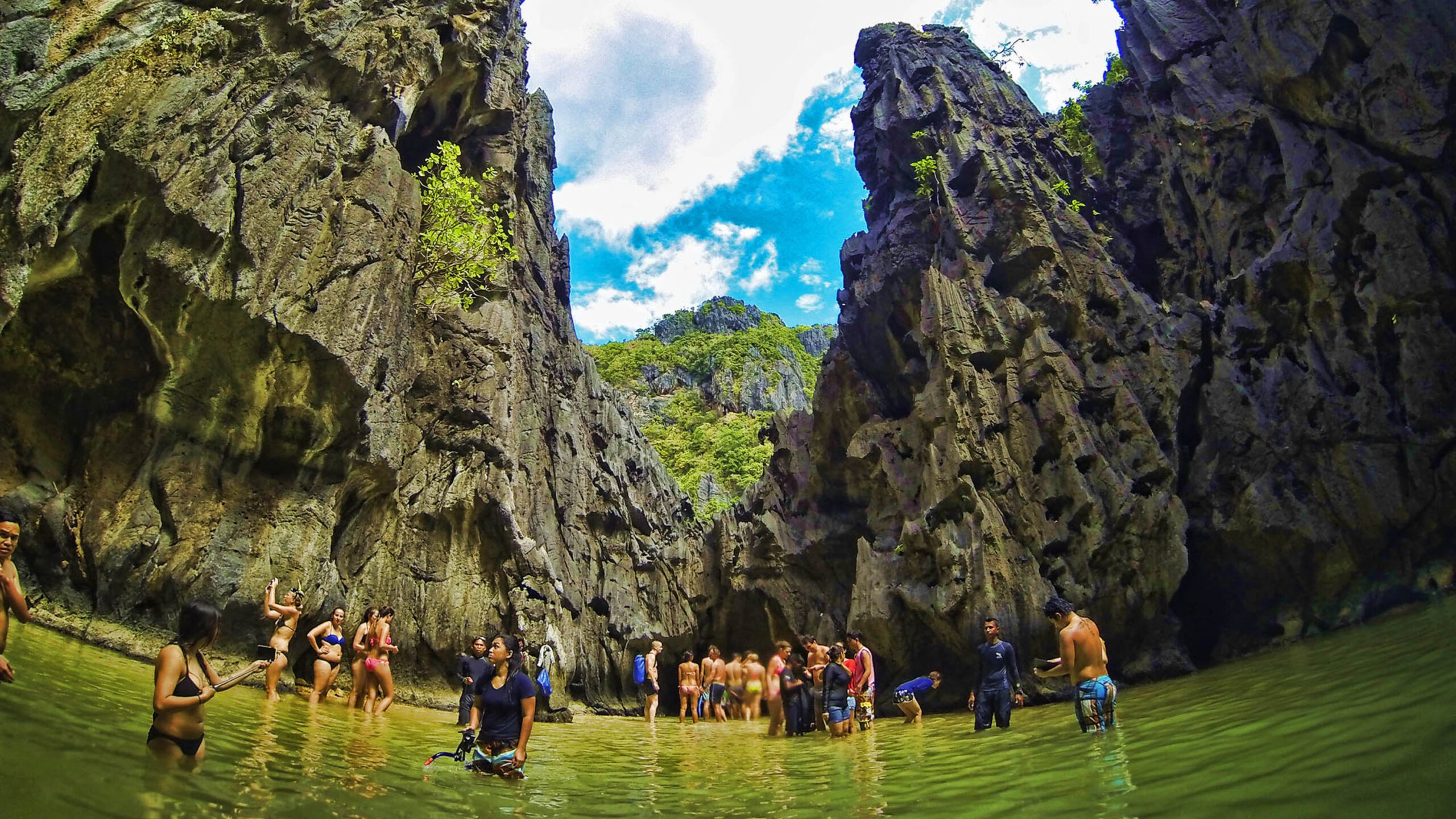SUMMARY
This is AI generated summarization, which may have errors. For context, always refer to the full article.

PALAWAN, Philippines – For years, the world-famous El Nido town in Palawan has lured throngs of tourists from across the globe, thanks to its majestic karst cliffs, white sand beaches, crystal-clear water, and impressive diving sites.
But the steady stream of tourists that keeps the local economy thriving comes with a price.
For El Nido, a first-class town of 36,000 inhabitants in northern Palawan mainland, the price is the growing food insecurity. Local food production just cannot keep up with the growing number of people to feed, says municipal tourism officer Arvin Acosta.
“The food production in our town cannot sustain its growing population” brought on by the influx of tourists, whose number hit 124,000 in 2016, he said. “Each tourist stays for an average of 2.7 nights.”
Acosta shared this during a discussion on sustainable agriculture on Wednesday, June 21, as part of the two-day “Biodiversity and Energy 101” lecture and training organized by the Palawan Council for Sustainable Development. The training was for the board members of the local government units’ Environmentally Critical Areas Network (ECAN).
He added that most of the goods, like vegetables and even poultry, being sold in El Nido’s public market are from the neighboring towns of Taytay and Roxas, and sometimes from Puerto Princesa City.
‘Massive land conversion’
There are other factors that contribute to the inadequacy of the food supply. Agricultural lands being converted into resorts is one of them, Acosta said.
Municipal administrator RJ de la Calzada, who also attended the event, pointed out that locals had been selling their land in exchange for millions of pesos, resulting to “massive land conversion” in El Nido.
He said most locals who used to till the ground are now shifting to either white-collar jobs or easy-money opportunities in the tourism sector. “But there are still communities that tend to do agriculture,” he said.
The town administrator said they are finalizing their revised comprehensive land use plan (CLUP) to halt the land conversion.
Promoting agritourism
According to Acosta, the revised CLUP, now up for approval by the municipal council, pushes for agritourism that would encourage locals, especially the younger ones, not to leave their farms to work as tour guides for tour agencies offering island hopping packages or as hotel and restaurant staff.
Acosta believes it’s one of the ways of “doubling the income of the farmers because they can earn from their produce while also serving as tour guides” in their own place.
Under the revised CLUP, farmers are allowed to engage in the tourism industry as long as they will not develop their whole farmlands for tourism purposes.
“Only 10% of their farm area are buildable for tourist accommodation, restaurant, and the likes,” Acosta explained. But when constructing those structures, he added, “70% should be native materials to preserve the ambiance of the farmland.”
On the other hand, De la Calzada said they are coordinating with a Japanese company, which has expressed interest in putting up a model vegetable farm and transferring the agricultural technologies to farmers in El Nido.
“Hopefully, it would serve as an avenue for food production so as to resolve the food insecurity issue in the town,” the town administrator said. – Rappler.com
Add a comment
How does this make you feel?
There are no comments yet. Add your comment to start the conversation.